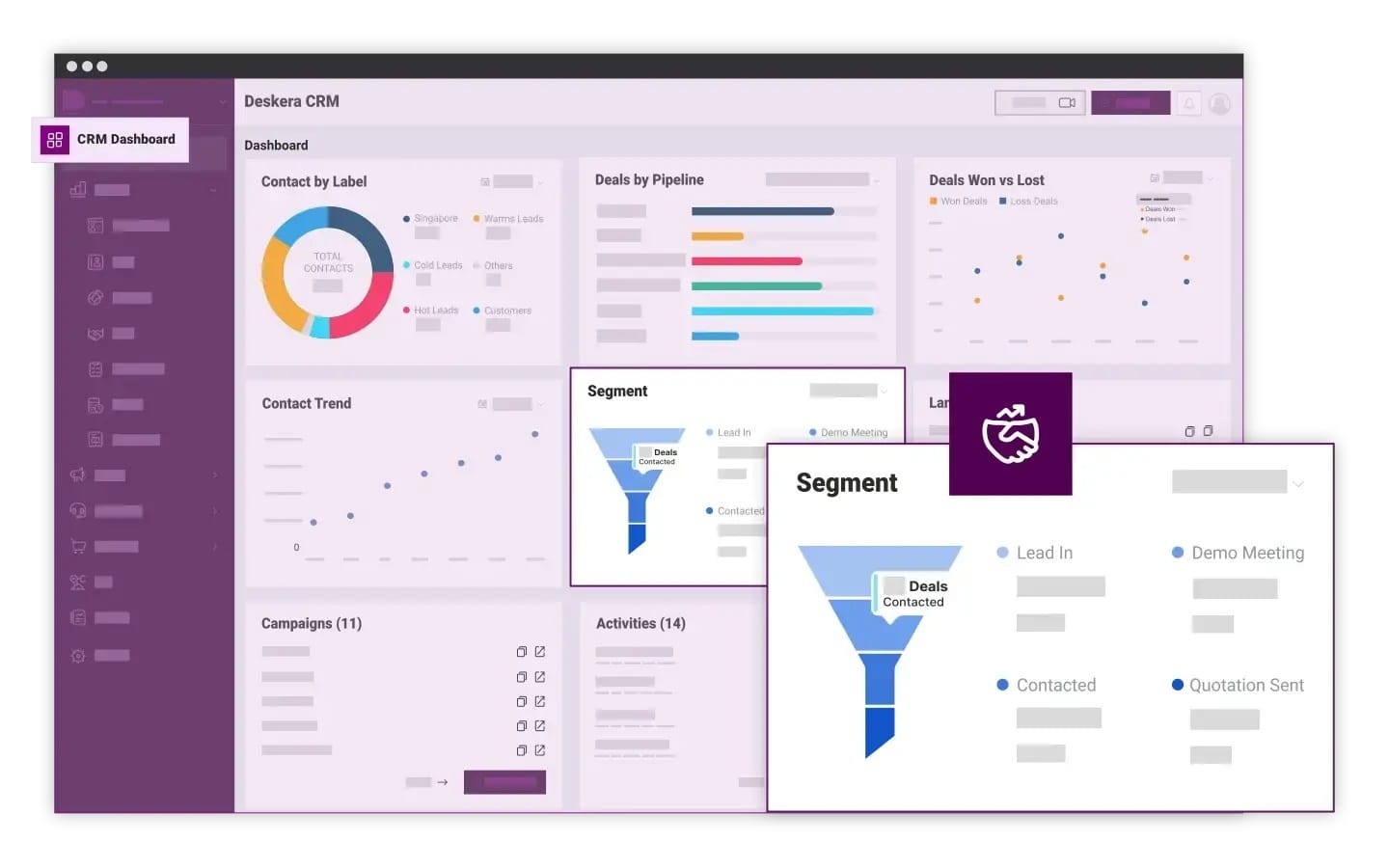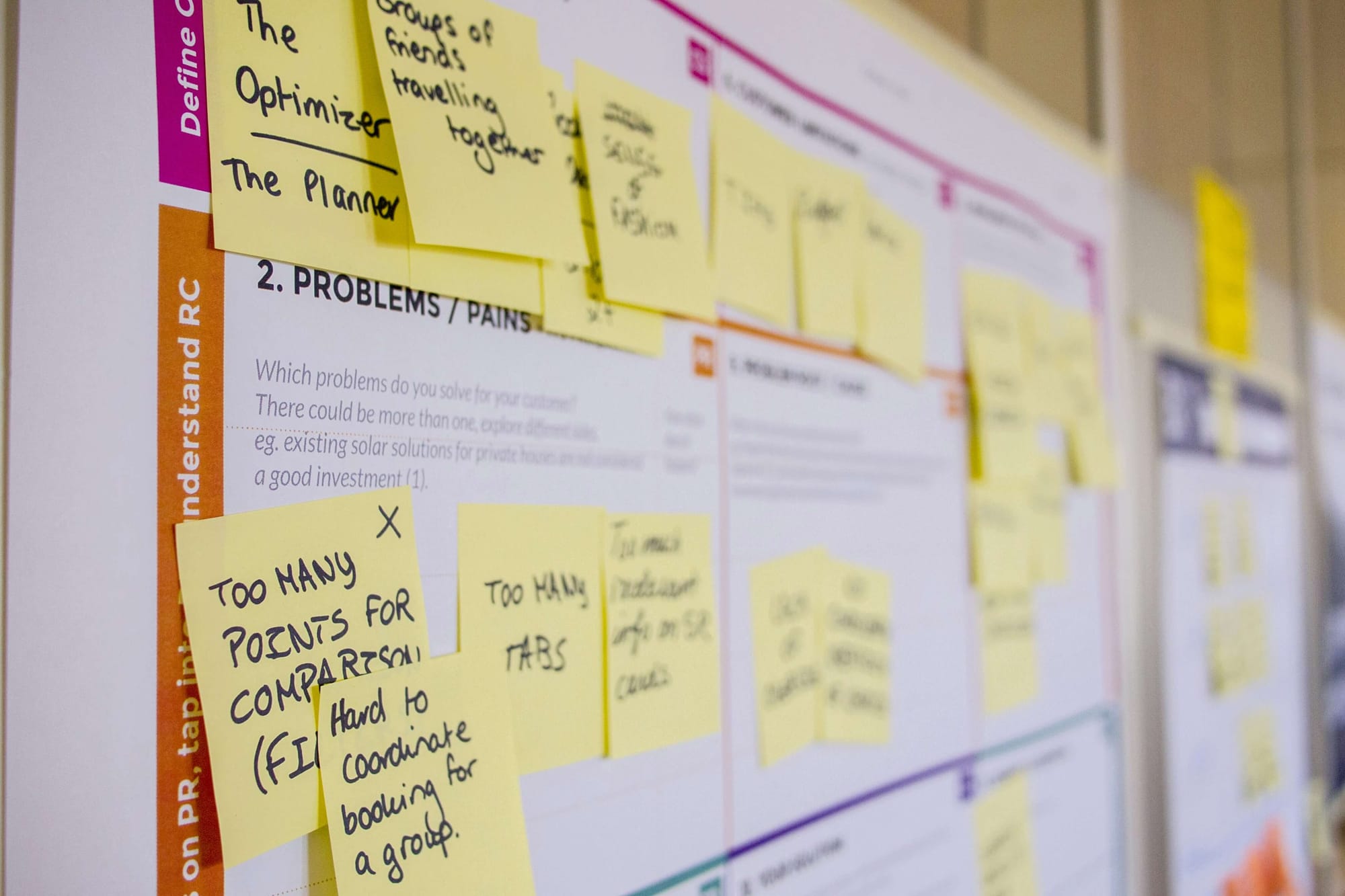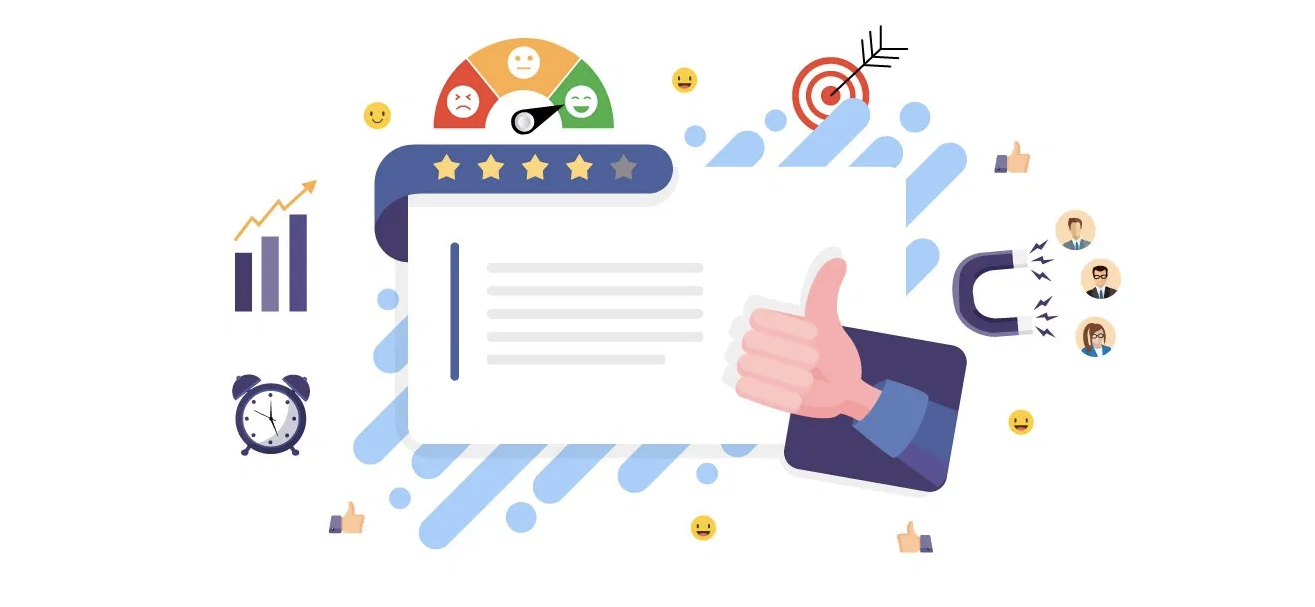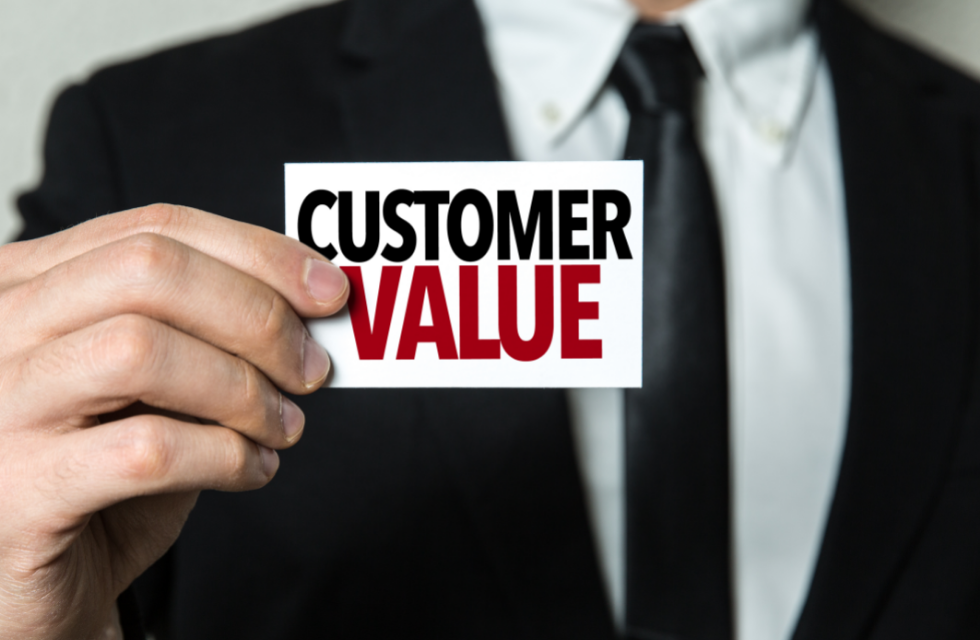What defines a remarkable customer experience in 2025? It’s no longer just about offering great products or responsive service — it’s about how seamlessly every interaction connects across multiple touchpoints. From marketing to post-purchase support, customers expect consistency, personalization, and instant solutions. Businesses that fail to deliver this connected experience risk losing customers to competitors that do.
Customer experience (CX) integration statistics show a powerful link between CX and business performance. A remarkable 84% of companies report increased revenue after improving their customer experience. Similarly, 86% of customers are willing to pay more for a superior experience, underlining how experience now outweighs price as a key differentiator. On the flip side, 73% of consumers are likely to switch to a competitor after just one poor interaction, proving that even a single gap in the customer journey can lead to lost loyalty and revenue.
In 2025, this landscape demands that businesses move beyond siloed systems. Integrating tools like CRM, ERP, marketing automation, and analytics platforms ensures every department operates on shared, real-time data — delivering faster responses, personalized recommendations, and cohesive engagement. The future of customer experience lies in creating a connected ecosystem where every tool communicates effectively to serve the customer better.
That’s where Deskera ERP plays a transformative role. With seamless integration capabilities across CRM, accounting, inventory, and sales platforms, Deskera empowers businesses to unify their operations and customer data. Its intelligent automation, real-time analytics, and AI assistant David help companies deliver faster, more personalized, and insight-driven customer experiences. In essence, Deskera ERP bridges the gap between backend efficiency and front-end satisfaction — turning integration into a powerful engine for customer loyalty and growth.
What is Customer Experience?
Customer experience (CX) refers to the overall perception and emotional connection a customer develops with a business throughout their entire journey — from the very first interaction to post-purchase engagement. It includes every touchpoint a customer encounters, such as marketing messages, website navigation, product usage, customer support, and even follow-up communication. Each of these interactions collectively shapes how customers view a brand and influences their future buying decisions.
At its core, customer experience is about more than just transactions — it’s about the quality of the relationship between a brand and its audience. It involves both actions and emotions, determining whether a customer feels valued, understood, and satisfied. A positive CX can build trust, foster long-term loyalty, and turn customers into brand advocates. Conversely, even one negative experience can damage brand perception and drive customers toward competitors.
In today’s competitive and often commoditized markets, where products and prices can easily be matched, customer experience becomes the true differentiator. Companies that deliver consistent, personalized, and seamless interactions across all channels are better positioned to stand out. This not only enhances customer satisfaction but also contributes directly to higher customer retention rates and stronger revenue growth.
Ultimately, customer experience is the heart of every successful business strategy. It’s not just about what a company offers — it’s about how customers feel when they engage with it. By prioritizing CX, businesses can create meaningful, lasting impressions that drive both emotional and financial value.
Why Software Integrations Matter for Customer Experience
In today’s hyper-connected business environment, customers expect seamless, personalized, and instant interactions at every touchpoint. However, these expectations are difficult to meet when business systems — from CRM and ERP to marketing automation and support tools — operate in isolation.
This is where software integrations make a critical difference. By connecting various applications and enabling real-time data sharing, integrations empower teams to collaborate effectively, eliminate bottlenecks, and deliver consistent, high-quality customer experiences.
Integrated systems don’t just improve internal efficiency — they also strengthen relationships with customers by ensuring faster responses, accurate information, and proactive service. Below are the key ways software integrations enhance the customer experience.
Optimize Operations
Software integrations unify fragmented data across departments, providing teams with a complete view of customer information. This allows businesses to deliver faster, more personalized services while reducing manual processes such as duplicate data entry or order tracking. By eliminating human error and automating workflows, integrations help minimize friction in the customer journey — one of the leading causes of dissatisfaction.
Provide Consistent Support and Experience
With centralized data at their fingertips, employees across departments — from sales and marketing to customer support — can access accurate, up-to-date information instantly. This ensures that customers receive timely and consistent responses, no matter which channel they use to reach out. Whether through email, chat, or phone, integrations make sure that every interaction feels connected, cohesive, and informed.
Address Customer Needs Proactively
Real-time data sharing between systems enables businesses to detect potential issues before they escalate. For example, integrated analytics tools can identify delays in order fulfillment or recurring service issues, prompting teams to act before customers even complain. By analyzing customer patterns and behaviors, businesses can also anticipate needs and provide proactive recommendations — turning reactive service into proactive engagement.
Improve Response Times
When CRM, helpdesk, and chatbot systems are integrated, frequently asked questions can be handled automatically, allowing human agents to focus on complex cases that require personalized attention. This reduces average response times and enhances overall service quality. Customers feel heard and supported more quickly — a key factor in building trust and loyalty.
Offer Opportunities to Expand into New Markets
E-commerce and marketplace integrations allow companies to manage global operations efficiently from a single platform. Businesses can customize offerings for different regions, manage orders in local currencies, and provide faster deliveries. Additionally, integrated customer support systems can offer multilingual communication, ensuring that new customers across markets enjoy the same level of satisfaction and service consistency.
In short, software integrations are the backbone of modern customer experience. They enable operational agility, empower teams with real-time insights, and ensure that every customer interaction is meaningful and efficient — driving customer loyalty, retention, and long-term growth.
Key Features of Effective CX Integrations
Not all integrations deliver the same impact — truly effective customer experience (CX) integrations are designed to create synergy across systems, teams, and customer touchpoints. They go beyond simple data exchange to enable seamless collaboration, actionable insights, and real-time personalization. In today’s fast-paced, customer-driven landscape, these integrations act as the foundation for a consistent, intelligent, and efficient CX strategy.
Below are the key features that make customer experience integrations effective and future-ready.
Centralized Data Visibility
An effective CX integration connects data from multiple systems — CRM, ERP, marketing automation, and support platforms — into a single, unified view. This 360° customer perspective ensures that every department works with the same accurate and updated information. With complete visibility into purchase history, preferences, and interactions, businesses can deliver highly relevant and timely responses that improve satisfaction and trust.
Real-Time Data Synchronization
In a world where customer needs evolve by the minute, real-time data synchronization is essential. Integrations that instantly update changes across systems — such as order status, payment details, or support tickets — eliminate communication lags and prevent errors. This ensures customers always receive up-to-date information, reducing frustration and building confidence in your brand’s reliability.
Seamless Automation and Workflow Efficiency
Automation is at the heart of impactful CX integrations. From automatically routing support tickets to triggering personalized marketing campaigns, integrated workflows reduce manual effort and accelerate service delivery. This not only streamlines internal operations but also ensures customers receive faster resolutions and smoother experiences.
Personalized Engagement Through Analytics
Advanced integrations combine data from multiple channels to deliver rich insights into customer behavior. These analytics empower businesses to tailor offers, communications, and experiences to each individual. Whether it’s sending a personalized email, recommending a product, or predicting churn risk, analytics-driven personalization strengthens customer relationships and drives loyalty.
Cross-Channel Communication
Modern customers interact with businesses across many channels — websites, chatbots, email, social media, and phone. Effective CX integrations ensure that all these interactions are connected and consistent. A query raised on chat can be continued over email without losing context, creating a seamless omnichannel experience that customers value and remember.
AI and Predictive Insights
AI-powered integrations take customer experience to the next level by analyzing trends, predicting customer intent, and enabling proactive engagement. These systems can anticipate needs — such as offering solutions before an issue arises — and optimize every interaction. Predictive insights allow businesses to stay ahead of customer expectations rather than reacting to them.
Scalability and Flexibility
As customer needs grow and technologies evolve, CX integrations must be scalable and adaptable. Effective integrations are built with flexibility in mind, allowing businesses to easily add new tools, platforms, or markets without disrupting existing systems. This future-proofs operations and supports long-term growth.
In essence, effective CX integrations unify systems, automate workflows, and personalize engagement at scale. They empower businesses to deliver faster, smarter, and more connected experiences — transforming every interaction into an opportunity to build loyalty and long-term value.
Top 13 Integrations That Transform Customer Experience in 2025
In 2025, the best customer experiences are no longer defined by isolated touchpoints but by how seamlessly different systems communicate. Software integrations now shape every part of the customer journey — from browsing and buying to delivery, feedback, and support.
By enabling data to flow freely between departments and applications, integrations eliminate friction, enhance personalization, and allow businesses to anticipate customer needs in real time.
Below are the top 13 integrations that are redefining customer experience (CX) in 2025, driving consistency, responsiveness, and satisfaction across every channel.
1. Enterprise Resource Planning (ERP) Integration
ERP integrations form the operational backbone of customer-centric organizations. By linking finance, inventory, supply chain, and customer-facing systems, they ensure every interaction is informed by real-time data. Sales teams can provide accurate delivery estimates, while intelligent routing speeds up fulfillment and simplifies returns.
With centralized access to account balances, order statuses, and purchase histories, service teams can resolve issues quickly and consistently. When integrated with customer data, ERP systems enable tailored recommendations and loyalty programs, boosting retention. Businesses also gain insights into demand trends and product performance — turning operational efficiency into a strategic CX advantage.
With Deskera ERP, businesses can unify core operations — finance, inventory, and order management — in one place, ensuring transparency, automation, and speed that directly enhance customer satisfaction.
2. Customer Relationship Management (CRM) Integration
CRM integrations bring together sales, marketing, and customer service data into a unified system. This holistic view helps teams personalize every interaction, from initial outreach to ongoing support. Automated lead management and nurture campaigns create lasting first impressions, while shared records prevent communication breakdowns during the sales process.
Integrating CRM with ERP and other tools ensures service agents have instant access to past orders and support tickets, resulting in faster, more personalized resolutions. Predictive analytics further identifies churn risks, helping businesses retain valuable customers before they disengage.
3. Marketing Automation Integration
Marketing automation integrations ensure customers receive relevant, timely, and personalized communication. By analyzing behavior and purchase patterns, businesses can trigger reminders, special offers, or follow-up emails at precisely the right time. These integrations also connect with CRM and ecommerce platforms to synchronize audience data and messaging.
The result? Stronger engagement, higher conversion rates, and more meaningful relationships. Teams can also track which campaigns perform best and refine future strategies based on measurable insights.
4. Inventory Management Integration
Inventory integrations enhance customer experience through transparency and efficiency. Real-time visibility into stock levels prevents overselling, supports faster order fulfillment, and enables instant restocking of popular items.
Connected ecommerce and POS systems ensure product availability is accurate across all channels. Customers can check store-level inventory, receive stock alerts, and enjoy quicker deliveries. In addition, analytics from these integrations help businesses align stock strategies with customer demand, reducing frustration caused by out-of-stock scenarios.
5. Point of Sale (POS) Integration
POS integrations create a unified shopping experience, whether online, in-store, or through mobile channels. Centralized transaction data allows loyalty programs and discounts to work seamlessly across platforms.
Customers benefit from frictionless checkouts, contactless payments, and instant digital receipts. Mobile POS systems extend this convenience to events, pop-ups, and curbside pickups — adapting to evolving shopping preferences and enhancing overall satisfaction.
6. Ecommerce Integration
Ecommerce integrations connect online storefronts with back-end systems like ERP, CRM, and helpdesk software. Customers gain real-time access to order updates, shipping details, and personalized recommendations based on previous interactions.
By streamlining processes such as returns, refunds, and product reviews, businesses can turn potentially negative experiences into opportunities for delight. These integrations also help teams respond faster to customer inquiries, improving trust and loyalty.
7. Data Warehouse Integration
Data warehouse integrations aggregate data from various touchpoints into a single analytical hub. They empower businesses to uncover patterns in customer behavior, predict demand fluctuations, and personalize experiences based on deep insights.
AI-powered analysis within these integrations can detect sentiment shifts, highlight loyalty opportunities, or trigger automated follow-ups after negative experiences. Over time, these insights help organizations anticipate needs and deliver proactive service rather than reactive solutions.
8. Order Management Integration
Order management integrations synchronize sales, inventory, and delivery systems to ensure consistency across all fulfillment stages. Customers receive uniform updates, regardless of whether they purchase through a website, app, or marketplace.
Automated workflows determine the fastest and most efficient shipping methods, reducing delays and manual errors. Teams can monitor progress in real time, address bottlenecks early, and guarantee that every order experience is smooth and transparent.
9. Marketplace Integration
Marketplace integrations streamline operations across third-party platforms, ensuring unified pricing, inventory accuracy, and order visibility. Customers enjoy faster fulfillment, reliable stock information, and consistent experiences whether they buy directly or through a marketplace.
Centralized dashboards also enable customer service teams to manage reviews, queries, and returns efficiently — strengthening brand reputation and ensuring uniform quality across all channels.
10. Collaboration and Communication Integration
Collaboration integrations bridge internal teams and customer-facing channels. By connecting CRM, email, chat, and support platforms, they allow instant data sharing and unified communication. Teams can track customer issues in real time, coordinate responses, and maintain transparency throughout the service process.
This interconnected approach ensures no message is lost and no customer concern goes unanswered — improving responsiveness, accuracy, and overall satisfaction.
11. Payment Gateway Integration
Payment gateway integrations simplify the checkout process and build customer confidence. By securely connecting multiple payment options — including cards, wallets, and bank transfers — businesses can accommodate diverse preferences globally.
Fast, reliable, and transparent payment experiences reduce cart abandonment rates and enhance customer satisfaction. Real-time updates on payment confirmations and refunds also foster trust and transparency.
12. Analytics and Business Intelligence (BI) Integration
Analytics and BI integrations transform raw data into actionable insights. They connect with CRM, ERP, and marketing systems to deliver performance dashboards that visualize customer trends and satisfaction levels.
With predictive analytics, businesses can anticipate customer behavior — such as when a buyer is likely to reorder or churn — and act strategically. BI integrations also empower leaders to make data-driven decisions that enhance experience and profitability simultaneously.
13. Social Media Integration
Social media integrations allow businesses to engage customers where they spend the most time. By connecting CX systems to social platforms, businesses can monitor mentions, respond to queries, and analyze sentiment in real time.
Integrated social insights also fuel personalized marketing campaigns and product recommendations. This ensures customers experience consistent messaging and timely interactions across all digital touchpoints.
In 2025, customer experience thrives on integration. Every connected system — from ERP and CRM to ecommerce and analytics — contributes to faster, more personalized, and more consistent interactions. By embracing unified platforms like Deskera ERP, businesses can transform fragmented processes into cohesive, insight-driven ecosystems that put the customer at the center of every decision.
How These Integrations Work Together to Deliver a Unified CX
Customer experience (CX) doesn’t just depend on individual systems — it thrives when all integrations work seamlessly together to create a unified, end-to-end journey.
In today’s digital ecosystem, customers expect smooth transitions between every touchpoint — from discovering a product to receiving post-purchase support. Behind the scenes, this requires real-time data synchronization across sales, marketing, finance, and service functions.
Here’s how these integrations collaborate to deliver a truly connected and unified CX:
1. Real-Time Data Flow Across Systems
When ERP, CRM, and marketing automation tools are integrated, they share live customer and transaction data instantly.
- For example, when a customer makes a purchase, the ERP updates stock levels, the CRM records the order, and marketing systems trigger personalized post-purchase emails. This synchronization ensures every department sees the same customer information, minimizing delays and errors — and giving customers faster, more accurate responses.
2. Seamless Omnichannel Experiences
Integrations between ecommerce, POS, and marketplace platforms enable businesses to deliver a consistent brand experience across all channels.
- Whether a customer shops online, in-store, or through a third-party marketplace, their preferences, loyalty points, and purchase history remain connected. This ensures that customers can start their journey on one channel and continue on another without friction — boosting convenience and satisfaction.
3. Unified Customer Insights and Analytics
Data warehouse, BI, and analytics integrations consolidate customer data from multiple systems to provide a 360° view of the customer.
- Businesses can analyze purchasing behavior, sentiment, and engagement patterns to predict needs and personalize interactions.
- These insights also help identify high-value customers, measure satisfaction, and fine-tune marketing campaigns. With centralized intelligence, decisions are more informed, and CX strategies become proactive rather than reactive.
4. Smooth and Secure Transactions
Payment gateway and ERP integrations ensure customers experience a frictionless and trustworthy checkout process.
- Payment confirmations, refunds, and billing data flow directly into ERP and CRM systems.
- Finance teams gain immediate visibility into transactions, while customers receive instant updates. This transparency builds trust and strengthens the perception of reliability — two cornerstones of great customer experience.
5. Faster Order Fulfillment and Communication
Integrating inventory management, order management, and logistics systems helps businesses meet customer expectations for speed and accuracy.
- When an order is placed, inventory levels adjust in real time, and fulfillment details are instantly communicated to shipping partners.
- Customers can track their orders seamlessly through automated updates. This reduces delays, eliminates confusion, and boosts post-purchase satisfaction.
6. Real-Time Engagement Through Social Media
Social media integrations bridge marketing, CRM, and support systems to create responsive, real-time interactions.
- Customer messages, comments, and reviews flow into centralized dashboards where support agents can respond instantly.
- Marketing teams can use this data to deliver relevant promotions or address negative sentiment before it escalates. This unified approach turns social channels into dynamic extensions of customer care and engagement.
7. Internal Collaboration and CX Agility
Collaboration and communication integrations ensure all departments — from marketing to support — work from the same playbook.
- Customer issues or opportunities flagged in the CRM can be discussed in real time via integrated communication tools.
- This shortens response cycles and ensures that no query goes unresolved. With teams aligned and informed, customer interactions become faster, more consistent, and empathetic.
When these integrations work in harmony, businesses gain a single source of truth about every customer interaction. Data flows freely, automation eliminates silos, and every department — from sales to support — can deliver context-aware, timely, and personalized service.
Platforms like Deskera ERP make this unified experience possible by connecting finance, inventory, CRM, and analytics in one ecosystem. The outcome? A customer journey that feels effortless, personal, and truly connected — the hallmark of CX excellence in 2025.
Best Practices for Implementing Customer Experience Integrations
Building a unified customer experience (CX) ecosystem requires more than just connecting tools — it demands strategy, precision, and an unwavering focus on the customer journey. Implementing integrations thoughtfully ensures that every system exchange adds value, minimizes friction, and delivers measurable business impact.
Here are some best practices to help organizations implement CX integrations effectively and achieve long-term success:
1. Define Clear CX Goals Before Integration
Start by identifying what you want your integrations to achieve — whether it’s faster response times, personalized recommendations, or seamless omnichannel experiences.
- Map the entire customer journey and pinpoint pain points where integrations can enhance value.
- Align integration goals with key CX metrics such as Net Promoter Score (NPS), Customer Satisfaction (CSAT), and retention rates.
This clarity ensures every integration has a direct, measurable impact on customer experience rather than existing as a disconnected technical upgrade.
2. Prioritize Systems That Influence the Customer Journey Most
Not all integrations deliver the same CX value. Prioritize systems that have the greatest direct impact on customers — such as CRM, ERP, ecommerce, and marketing automation platforms.
- These integrations provide real-time data that directly shape personalization, responsiveness, and accuracy. By focusing on high-impact areas first, you establish a strong foundation before expanding to more specialized systems like analytics or collaboration tools.
3. Ensure Data Consistency and Centralization
A unified CX depends on a single source of truth for customer and transaction data.
- Standardize data formats, eliminate duplicates, and ensure synchronization across systems.
- Use a centralized data warehouse or ERP platform like Deskera to maintain accurate and up-to-date customer profiles. Data consistency prevents errors in billing, fulfillment, and communication — issues that can quickly erode trust.
4. Focus on Seamless Cross-Department Collaboration
CX integrations should break down silos between sales, marketing, finance, and customer support teams.
- Implement shared dashboards and communication tools that allow teams to access and act on customer insights in real time.
- Encourage a cross-functional approach to CX, ensuring everyone works toward common experience-driven KPIs.
When departments operate collaboratively, customers benefit from faster responses, fewer handoffs, and more cohesive interactions.
5. Prioritize Security and Compliance
Every integration that handles customer data must adhere to data privacy regulations like GDPR, CCPA, and regional security standards.
- Use encrypted connections and authentication protocols to protect sensitive data.
- Audit integrations regularly to ensure compliance and prevent breaches.
Security isn’t just a technical concern — it’s a key trust factor in customer experience.
6. Leverage Automation to Improve Efficiency
Automating workflows between systems reduces manual effort and enhances responsiveness.
- For example, automatically trigger support tickets when a customer submits negative feedback, or send personalized offers based on real-time purchase data.
- Use tools that enable workflow automation between CRM, ERP, and marketing systems for faster service delivery.
Automation allows employees to focus on meaningful interactions while systems handle repetitive processes efficiently.
7. Monitor Integration Performance and CX Metrics
Once integrations are in place, continuously track performance to ensure they’re delivering desired results.
- Use analytics dashboards to measure metrics like customer wait times, resolution rates, order accuracy, and engagement levels.
- Regularly collect feedback from both customers and internal teams to identify areas for improvement.
A strong feedback loop ensures integrations evolve alongside customer expectations and business goals.
8. Choose Scalable, Future-Ready Platforms
Customer needs and technologies will continue to evolve, especially with advancements in AI and predictive analytics.
- Select integration-friendly systems — such as Deskera ERP — that can easily connect with future tools without disrupting existing operations.
- Opt for cloud-based solutions to ensure flexibility, faster deployment, and easier updates.
Scalability ensures your CX ecosystem remains adaptable, innovative, and sustainable as your customer base grows.
9. Train Teams on Integrated Systems
Even the best integrations can fall short if employees don’t understand how to use them effectively.
- Provide training programs and support resources to help staff interpret integrated data and use automation tools correctly.
- Empower every team member to make data-driven decisions that improve the customer journey.
Knowledgeable, confident employees create the human connection that enhances the technology-driven CX.
10. Partner with Experts for a Smooth Rollout
Collaborate with experienced integration partners or platforms that specialize in multi-system orchestration.
- Deskera ERP, for instance, offers seamless integrations across finance, inventory, CRM, and analytics — allowing businesses to unify processes under one ecosystem.
- Expert guidance ensures faster deployment, fewer errors, and a clearer path to ROI.
Effective CX integration is not a one-time project — it’s an ongoing transformation. By combining strategy, automation, security, and scalability, businesses can deliver experiences that feel effortless, personal, and reliable at every interaction.
With the right tools and practices — and platforms like Deskera ERP — companies can turn every touchpoint into an opportunity to delight customers and strengthen long-term loyalty.
Future Trends in CX Integrations for 2025 and Beyond
As we move deeper into 2025, the landscape for customer experience (CX) integrations continues to evolve. New technologies, shifting customer expectations, and increasing competition are driving businesses to rethink how their systems connect and interact. Below are some of the most significant trends shaping the future of CX integrations and how they will redefine customer engagement.
1. Hyper-Personalization & Predictive CX
Customers no longer accept generic, one-size-fits-all experiences. The focus is shifting toward hyper-personalization — using real-time data, behavioral insights, and AI to treat each customer as an individual. Integrated systems enable personalization at scale by delivering dynamic product recommendations, tailored messages, and predictive offers based on past purchases and preferences.
Predictive analytics will also play a greater role, helping businesses anticipate customer needs or issues — such as sending replenishment reminders, offering upgrades, or identifying churn risks — before customers even ask.
2. Generative AI, Conversational Interfaces & Voice
AI-driven experiences are transforming how customers interact with brands. Chatbots, virtual assistants, and voice-enabled systems are becoming more human-like and capable of handling complex queries.
Future integrations will increasingly support conversational interfaces embedded across the customer journey — from discovery and support to feedback and re-engagement. Seamless integration between CRM, help desk, and AI tools will enable proactive problem resolution, smarter upselling, and smoother user interactions.
3. Omnichannel and Real-Time Experience Seamlessness
Omnichannel experiences have become the new standard. Customers expect consistent engagement across mobile apps, websites, social media, and physical stores.
Integrations must therefore support real-time synchronization of data so that customer profiles, preferences, and order statuses remain consistent across all platforms. Whether a customer switches from online browsing to in-store purchasing or contacts support via chat after an email, their experience should remain cohesive and uninterrupted.
4. AI-Driven Automation & Agentic Systems
The next wave of integrations will feature agentic AI — intelligent systems that can make decisions and take action autonomously. These systems will monitor sentiment trends, trigger retention campaigns, and dynamically adjust workflows without human intervention.
This marks a shift from traditional integrations that simply share data to intelligent integrations that act on data — optimizing workflows, improving timing, and enhancing customer satisfaction automatically.
5. Data Privacy, Security & Trust by Design
As data becomes more interconnected, privacy and security are becoming integral to CX strategies. Future integrations will be built with trust by design, incorporating data anonymization, consent management, encryption, and real-time compliance checks.
This ensures that businesses can personalize experiences responsibly while maintaining customer trust and adhering to evolving global data protection laws.
6. Low-Code / No-Code Integration Platforms
To accelerate innovation, organizations are adopting low-code and no-code tools that empower non-technical teams to build and manage integrations without heavy IT involvement.
This democratization of integration allows marketing, operations, and customer success teams to quickly adapt workflows, experiment with new channels, and optimize CX initiatives at speed.
7. Emerging Channels & Immersive Technologies
Immersive technologies such as augmented reality (AR) and virtual reality (VR) are beginning to reshape how customers engage with products and services.
In the near future, CX integrations will need to connect AR/VR experiences with ecommerce, CRM, and support systems — allowing customers to visualize products, receive guided assistance, or interact in virtual showrooms seamlessly across touchpoints.
8. Embedded Analytics & Actionable Insights
Data analytics is moving closer to the front lines of customer interaction. Future integrations will embed analytics directly into everyday workflows, providing real-time insights to sales, marketing, and service teams.
Instead of waiting for periodic reports, teams will have access to live dashboards within their primary tools — helping them make faster, data-driven decisions that immediately enhance customer satisfaction.
9. Globalization & Localization-Aware Integrations
As businesses expand globally, integrations must adapt to different regions, languages, currencies, and regulations. Future CX systems will support localized payment gateways, regional compliance, and native-language support — ensuring a consistent brand experience worldwide.
At the same time, centralized data management will preserve the unified view of the customer, allowing businesses to personalize experiences globally while maintaining operational consistency.
How Deskera ERP Fits into These Trends
Deskera ERP provides a solid foundation for modern CX integrations by connecting finance, inventory, CRM, and analytics into one unified platform. It supports:
- Hyper-personalization through a single source of truth for customer data and purchase history.
- Low-code integrations that make it easy to connect with AI-driven tools.
- Centralized governance and compliance for secure, privacy-compliant operations.
- Global scalability, offering support for multi-currency transactions and regional localization.
As these trends continue to unfold, Deskera ERP empowers businesses to stay ahead — creating seamless, intelligent, and future-ready customer experiences that drive loyalty and growth.
How Deskera ERP Helps You Deliver an Exceptional Customer Experience

In a world where customer expectations are constantly rising, businesses need an integrated system that unifies data, automates workflows, and ensures consistent interactions across every channel. Deskera ERP serves as that foundation — bringing together finance, inventory, sales, CRM, and analytics in one cohesive platform to power a truly connected customer experience (CX).
Here’s how Deskera ERP supports your CX transformation journey:
1. Centralized Data for a Unified View of Customers
Deskera ERP consolidates customer, inventory, and financial data into a single platform. This eliminates silos between departments, ensuring that every team — from sales to support — has access to accurate, real-time customer information. With this 360-degree view, you can deliver faster resolutions, personalized recommendations, and a more consistent experience across touchpoints.
2. Seamless Integration with Key Business Systems
Deskera ERP easily integrates with essential business tools such as CRM, ecommerce platforms, and payment gateways. These integrations streamline operations by syncing order details, inventory levels, and billing data in real time. The result? Customers get accurate delivery timelines, smooth payment experiences, and proactive communication at every stage of their journey.
3. Enhanced Personalization with Built-In Analytics
The platform’s advanced analytics and reporting tools help you turn raw data into actionable insights. Deskera ERP tracks buying patterns, order history, and engagement metrics — allowing you to tailor offers, loyalty programs, and communications to each customer’s unique preferences. Over time, this data-driven personalization builds stronger relationships and brand loyalty.
4. Automation That Improves Responsiveness and Accuracy
Deskera ERP automates repetitive tasks such as order processing, invoicing, and inventory updates. This not only speeds up fulfillment but also reduces human errors that could lead to customer dissatisfaction. Automation ensures customers receive timely updates, accurate billing, and quick responses — all of which contribute to a frictionless experience.
5. Streamlined Order Management and Fulfillment
With integrated order management, Deskera ensures that every purchase — whether from your website, marketplace, or in-store POS — is tracked and fulfilled efficiently. The system automatically syncs orders with available stock and shipping partners, keeping customers informed through every step of the delivery process.
6. Built-In Scalability for Global and Multichannel CX
As your customer base grows, Deskera ERP scales effortlessly. Its multi-currency and multi-location support makes it ideal for businesses expanding into new markets. Whether you’re managing multiple warehouses, handling regional pricing, or offering localized customer support, Deskera helps maintain a consistent global experience.
7. Proactive Decision-Making with AI Assistant “David”
Deskera’s AI-powered assistant, David, helps you make smarter business decisions in real time. By analyzing data across sales, finance, and operations, David provides predictive insights, reminders, and recommendations that help teams stay ahead of customer needs and market changes.
8. Strengthened Collaboration Across Departments
Deskera ERP breaks down communication barriers between teams. With shared dashboards and unified workflows, your marketing, finance, and support departments can coordinate seamlessly — ensuring that customers never face delays or miscommunication. Everyone stays aligned toward one common goal: delivering outstanding CX.
9. Robust Security and Compliance Management
Deskera places strong emphasis on data protection and compliance. With secure data storage, controlled access permissions, and adherence to international privacy standards, you can ensure customer data is handled responsibly — building trust and transparency in every interaction.
10. Continuous Improvement Through Real-Time Insights
Deskera’s real-time dashboards help you monitor key CX metrics such as order accuracy, resolution time, and customer satisfaction. With these insights, you can continuously refine your processes, eliminate bottlenecks, and evolve your customer experience strategy in line with changing expectations.
Deskera ERP is more than just an operations management platform — it’s a CX enabler that connects people, processes, and data to deliver exceptional customer journeys. By combining automation, analytics, and integration capabilities, Deskera empowers businesses to go beyond transactions and build lasting, meaningful relationships with their customers.
Key Takeaways
- Customer experience is the overall perception customers have of your brand throughout their journey — from first interaction to post-purchase support. Delivering a seamless, emotionally resonant experience drives loyalty, advocacy, and long-term business growth.
- Software integrations break down silos between systems and teams, ensuring data consistency, faster response times, and personalized engagement. Integrated tools help businesses operate efficiently and provide proactive, consistent support across all touchpoints.
- The most effective CX integrations unify systems such as CRM, ERP, marketing automation, and analytics platforms. Including payment gateways, social media channels, and business intelligence tools ensures businesses gain full visibility and deliver smooth, data-driven experiences.
- When multiple integrations work in harmony, they create a single source of truth for customer data. This unified ecosystem enables businesses to deliver personalized, timely, and omnichannel experiences — increasing trust and brand satisfaction.
- A successful integration strategy begins with clear goals, system compatibility checks, and phased rollouts. Ongoing monitoring, staff training, and prioritizing customer feedback help sustain a connected, high-performing CX ecosystem.
- AI-driven personalization, predictive analytics, and voice-enabled interfaces will shape the future of CX integrations. Businesses adopting automation and real-time data synchronization will lead in delivering intelligent, human-like customer interactions.
- Deskera ERP empowers businesses to unify data from sales, finance, inventory, and customer management systems. With seamless third-party integrations and automation capabilities, Deskera ensures efficient workflows, faster responses, and personalized customer experiences that drive retention and growth.
Related Articles

















